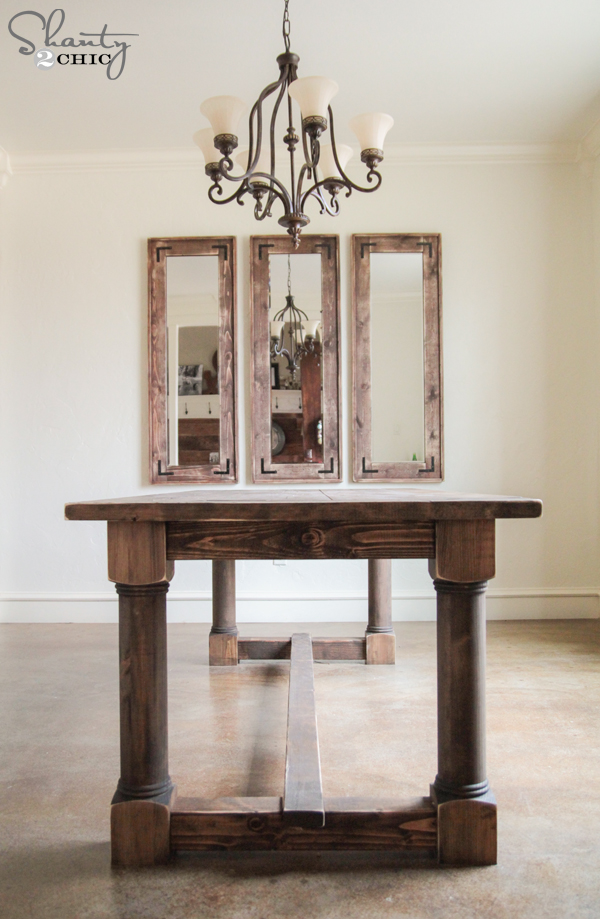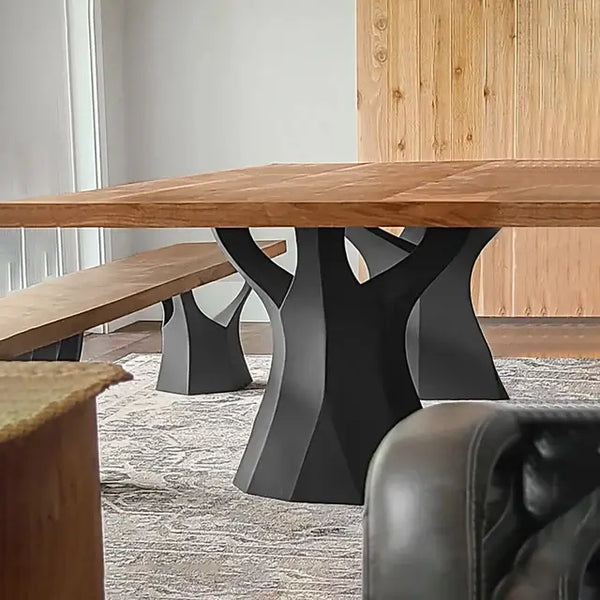How to Choose the Perfect Dining Room Table Legs for Your Home
How to Choose the Perfect Dining Room Table Legs for Your Home
Blog Article
From Typical to Modern: Locate the Ideal Dining Area Table Legs for Your Style
While traditional designs such as cabriole and transformed legs evoke a sense of timeless refinement, modern designs like hairpin and geometric alternatives provide a possibility for striking aesthetic passion. As you think about these aspects, the concern continues to be: exactly how can you perfectly integrate these varied leg styles to create an unified dining experience?
Recognizing Table Leg Styles
The selection of dining-room table leg styles can dramatically influence both the looks and capability of the area. Each leg design adds unique functional attributes and visual components, providing to varied layout preferences and usage demands. Comprehending these designs is vital for picking the right eating table that straightens with your overall interior layout vision.
For example, tapered legs offer a clean, timeless appearance that can enhance an area's style, while pedestal bases provide security and optimize legroom, making them excellent for smaller sized areas. Barrette legs, a hallmark of mid-century contemporary style, introduce a commercial flair, permitting an airy, open feel. Trestle legs evoke rustic appeal, offering durable assistance and a sense of timelessness.
Furthermore, the choice of materials plays a substantial duty. Wooden legs can bring warmth and structure, whereas steel alternatives often share a sleek, modern vibe. Inevitably, comprehending table leg designs is essential for producing a cohesive dining location that reflects personal design while guaranteeing usefulness and convenience. By attentively taking into consideration these components, you can improve both the functional and aesthetic allure of your dining space.
Typical Table Leg Options
When selecting dining-room table legs, traditional alternatives commonly symbolize ageless elegance and workmanship. These designs show a rich heritage and a dedication to quality, making them ideal for those that value traditional visual appeals.
One of one of the most famous typical leg styles is the cabriole leg, defined by its graceful bent form. This design often includes ornamental makings and is most frequently found in Queen Anne and Chippendale furniture. One more prominent alternative is the turned leg, which boasts a collection of smooth, rounded shapes that give a timeless appearance while maintaining security.
Additionally, the straight leg, while straightforward, provides a tough and unadorned structure that can blend flawlessly with a variety of tabletop styles. For those drawn to ornate outlining, claw-and-ball feet legs evoke a sense of magnificence and can function as a stunning focal point in any eating area.
Last but not least, stand bases, although not strictly legs, provide an alternate traditional choice that permits enough legroom and can be beautifully carved. Each of these standard leg styles adds to the total setting of a dining-room, weding function with visual charm.

Modern Table Leg Styles
Modern table leg styles provide a varied series of styles that highlight tidy lines and cutting-edge products. These layouts typically focus on functionality while functioning as striking focal factors within an eating area. Minimal aesthetic appeals are prevalent, with legs crafted from products such as steel, glass, and engineered timber, which add to a airy read more and contemporary feeling.
One preferred layout is the barrette leg, characterized by its slim, tapered structure that gives security without overwhelming the table top (dining room table legs). This design is commonly discovered in mid-century modern-day furniture and can easily enhance various eating table forms. An additional pattern is making use of geometric shapes, where legs might handle angular or asymmetrical types, including visual rate of interest and a touch of artistry

Blending Designs for Unique Areas
Often, house owners seek to develop special eating rooms that mirror their individual design by mixing different design components. This technique permits the unification of diverse looks, leading to an unified yet distinct environment. Matching a rustic wooden table with smooth, modern-day metal legs can produce an eye-catching comparison that boosts the area's overall charm.
In addition, incorporating vintage table legs with contemporary table tops can stimulate a feeling of history while preserving a contemporary perceptiveness. Such combinations not just display individual preference but also motivate imagination, enabling property owners to curate a space that feels both individual and welcoming.
Shade plays a vital role in this blending procedure; choosing table legs that enhance or contrast with the existing color pattern can improve visual passion. As an example, whitewashed legs can soften the daring of a dark table surface area, developing a well balanced aesthetic.
Tips for Picking the Right Legs
Picking the right table legs is essential for attaining both capability and visual charm in your eating area. Begin by taking into consideration the overall style of your space. Standard setups profit from legs that include complex carvings or turned styles, while contemporary spaces might ask for smooth, minimalist styles.
Following, examine the elevation and security of the legs. dining room table legs. Basic dining tables range in between 28 to 30 inches in elevation, so make certain the legs enhance this measurement for comfort. Additionally, robust materials, such as hardwood or steel, can improve security and durability
Assess the leg form also-- alternatives include straight, find out here tapered, or stand layouts. Straight legs offer a timeless look, while conical legs can add a touch of elegance. Pedestal bases provide sufficient legroom and are optimal for smaller rooms.
Conclusion
In summary, selecting the perfect eating room table legs needs cautious consideration of both traditional and modern designs. By integrating leg design, elevation, and product he said with the total decoration, a natural and inviting atmosphere can be attained.
The variety of eating room table leg designs can dramatically influence both the aesthetic appeals and performance of the space. Ultimately, comprehending table leg designs is important for developing a natural eating area that mirrors individual style while ensuring practicality and comfort.One of the most renowned conventional leg styles is the cabriole leg, defined by its stylish curved shape. Straight legs provide a classic look, while tapered legs can add a touch of sophistication.In summary, choosing the optimal dining space table legs requires careful factor to consider of both modern and conventional designs.
Report this page